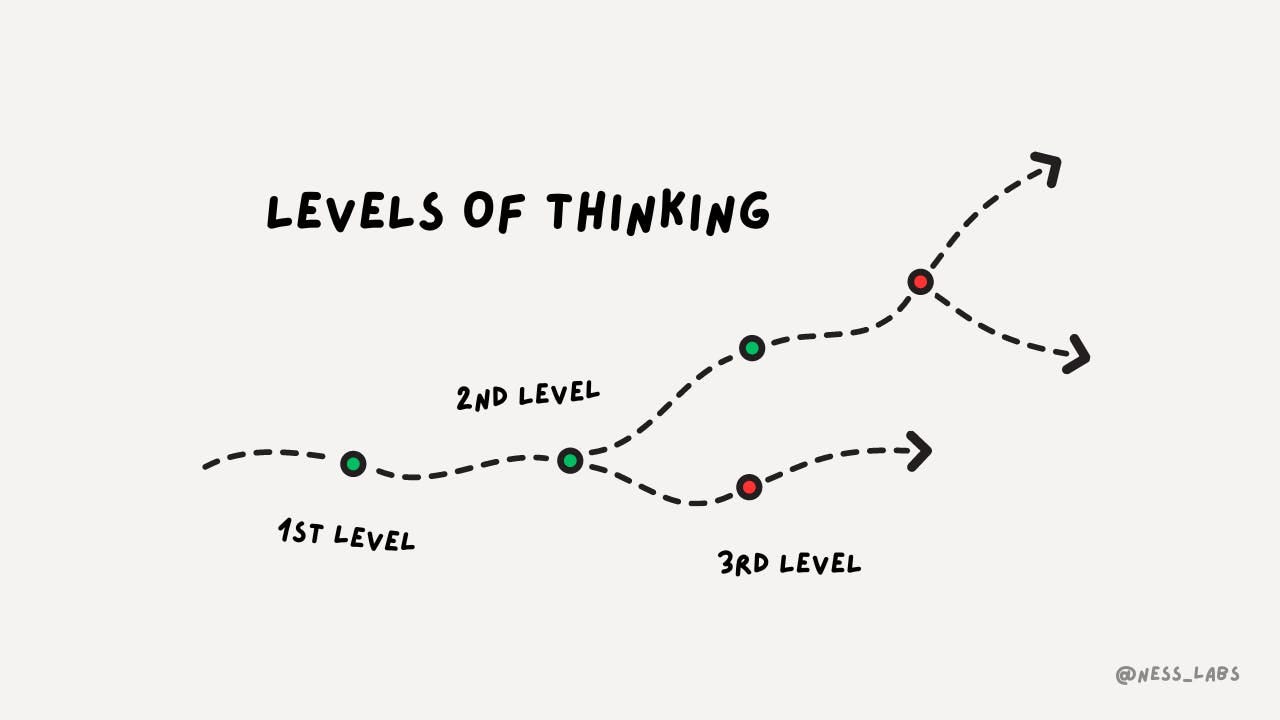DCX Links | September 8, 2024
From face-scanning at airports to Voice of Customer vs. Customer Research...this Week's DCX Hot Takes!
Weekly inspiration, education, and coaching for customer-obsessed leaders.
Welcome to DCX Links!
This week's DCX Links is jam-packed with articles and ideas that'll challenge how you think about customer experience.
I’m talking face-scanning at airports (yep, it's coming), CX lessons from a good friend who took an unexpected tumble, and why we need to level up our decision-making game. Plus, we're diving into the wild world of AI besties (it's a thing now), how our gadgets are shaping us (and vice versa), and why customer research isn't just about surveys anymore.
Trust me, these reads are gonna shake up your CX world in the best way possible. So grab your favorite beverage, find a comfy spot, and let's geek out over some seriously cool CX trends and ideas.
Happy reading!
-Mark
Here are this week’s must-read links:
Please Allow Me to Scan Your Face: The Future of Airport CX
When Rules Meet Reality: A CX Lesson from an Unexpected Injury
The Power of Second-Level Decision Making
AI Companions: The New Frontier of Customer Relationships
The Ethics of Technology: Shaping Tools That Shape Us
Voice of Customer vs. Customer Research: Understanding the Difference
Enjoy!
Please Allow Me to Scan Your Face: The Future of Airport CX
World's first airport to require biometric boarding to arrive in 2025 (cnbc.com)
Why it matters: Zayed International Airport in Abu Dhabi is set to become the world's first fully biometric airport by 2025, potentially revolutionizing the customer experience in air travel.
The big picture: This move highlights the growing trend towards biometric technology in airports, balancing efficiency with privacy concerns.
Key points:
Abu Dhabi's airport will use biometric sensors at every checkpoint by 2025.
The system relies on government partnership for biometric data collection.
U.S. airports are implementing biometrics more gradually due to privacy concerns.
By the numbers:
53% of surveyed U.S. travelers view airport biometrics positively.
12% support the idea but have privacy concerns.
What CX pros should know:
Efficiency vs. Privacy: Balance the benefits of streamlined processes with customer privacy concerns.
Phased Implementation: Consider gradual rollouts of biometric tech to gauge customer acceptance.
Clear Communication: Establish and communicate clear guidelines on biometric data usage to build trust.
Human Touch: Use biometrics to free up staff for higher-level customer service tasks.
Backup Systems: Maintain alternative processes for customers who can't or won't use biometric systems.
Personalization Opportunities: Explore how biometric data can enhance personalized services.
Staff Training: Prepare staff to assist and educate customers on new biometric processes.
The bottom line: While full biometric integration faces challenges in the U.S., the trend is clear. CX professionals in travel and beyond should prepare for a future where biometrics play a significant role in customer interactions, focusing on building trust and enhancing the overall experience.
Related: Stadiums Are Embracing Face Recognition. Privacy Advocates Say They Should Stick to Sports | WIRED
Can you opt out of airport face scans? Yes! Here’s how. | Vox
"Staying on top of the latest CX trends is tough, especially with how AI is transforming the field. Thankfully, the DCX newsletter does a brilliant job of curating the must-know info.” - Jimmy, CX Leader, Google
When Rules Meet Reality: A CX Lesson from an Unexpected Injury
Mindless Moment - by Tobin Trevarthen - Now I New I Next (substack.com)
My friend Tobin Trevarthen's recent travel mishap offers valuable insights for CX professionals. His story shows how crucial adaptable and empathetic service is during unexpected customer challenges.
The situation:
Tobin injures his knee before a flight
Standard wheelchairs don't accommodate his need to keep his leg straight
Airport staff improvise with two wheelchairs facing opposite directions
Some supervisors praise the creativity; others cite policy violations
Why it matters: This incident highlights the tension between rigid policies and necessary on-the-spot problem-solving in customer service.
Key takeaways for CX pros:
Empower frontline workers: Allow and encourage staff to find creative solutions to unique customer problems, even if they fall outside standard procedures.
Balance policy with empathy: Recognize when strict adherence to policy may harm customer experience and allow for flexibility in exceptional circumstances.
Recognize and reward innovation: Celebrate employees who go above and beyond to solve customer issues, rather than reprimanding them for bending rules.
Prepare for edge cases: Anticipate and plan for scenarios that fall outside typical service situations, especially in industries serving diverse customer needs.
Train for empathy: Ensure all staff, including supervisors, understand the importance of empathy in customer interactions, particularly in stressful situations.
Feedback mechanisms: Implement systems to capture and learn from unique customer service situations to improve future responses.
Policy review: Regularly assess company policies to ensure they allow for appropriate flexibility in customer service delivery.
The bottom line: Companies need to empower staff to provide adaptive, empathetic service, especially in unexpected situations. Tobin's experience shows how this approach can turn a potential negative into a loyalty-building positive, reminding us of CX's real-world impact in crucial customer moments.
The Power of Second-Level Decision Making
Ness Labs: Levels of Thinking 🪜
I've been an avid reader of Ness Labs for quite some time now, and I'm continually impressed by the depth and applicability of the content. Anne-Laure Le Cunff, the founder, has a knack for distilling complex cognitive concepts into practical insights. Her latest piece on levels of thinking is no exception, offering valuable lessons that resonate well beyond personal productivity into professional domains like customer experience.
Why it matters: Many decisions we make have unintended consequences due to first-level thinking. Understanding and applying second-level thinking can lead to better long-term outcomes in both personal and professional contexts.
The big picture: Howard Marks's book “The Most Important Thing” introduces the concepts of first-level and second-level thinking to explain decision-making processes.
First-level thinking: Simplistic, superficial, and based on immediate outcomes.
Second-level thinking: Deep, complex, and considers long-term consequences.
Key examples:
Accepting a job offer based solely on salary (first-level) vs. considering culture and career prospects (second-level).
Skipping meals to save time, leading to decreased productivity (unintended consequence of first-level thinking).
How to practice second-level thinking:
1. Consider a range of future outcomes.
2. Assess the probability of your prediction.
3. Compare your view to the consensus.
4. Evaluate short-term and long-term impacts (10-10-10 method).
Key takeaways for CX professionals:
Decision-making impact: Understand how first-level thinking can lead to short-sighted CX strategies that may have negative long-term effects on customer satisfaction and loyalty.
Strategic planning: Implement second-level thinking when designing customer experience initiatives to anticipate potential challenges and opportunities beyond immediate results.
Customer journey mapping: Use the 10-10-10 method to evaluate how CX decisions might affect customers in the short, medium, and long term.
Team collaboration: Encourage team members to engage in second-level thinking during brainstorming and problem-solving sessions to develop more robust CX solutions.
Metrics and KPIs: Develop metrics that capture both immediate and long-term impacts of CX initiatives to align with second-level thinking principles.
Continuous improvement: Regularly revisit past decisions to identify instances where first-level thinking may have led to suboptimal outcomes, and use these insights to refine future CX strategies.
The bottom line: By cultivating second-level thinking, CX professionals can make more informed decisions that lead to sustainable improvements in customer experience and business outcomes.
"Love your content and valuable insights into CX and industry trends. Thanks for sharing with us!" - Corey








